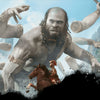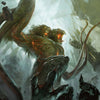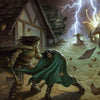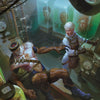20 Ingredients that Make a Great D&D Monster
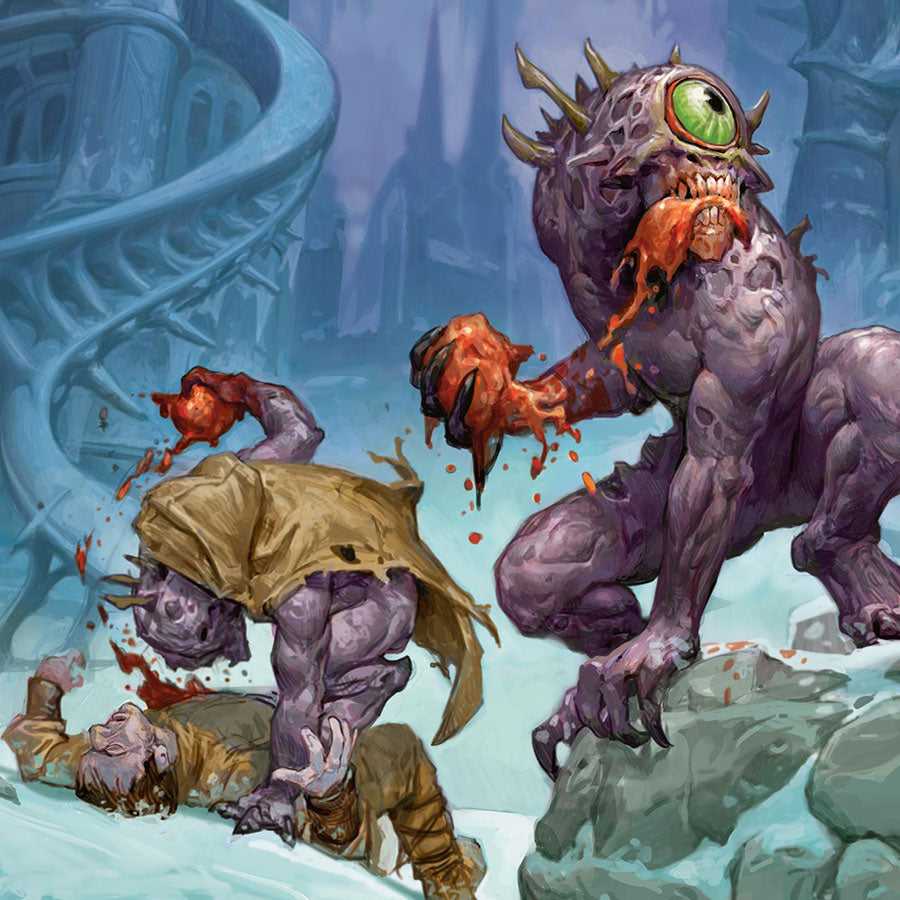
Whether you’re homebrewing a monster or flipping through the monster manual to pick out a few baddies to use in your next D&D game, you should first know WHAT EXACTLY makes a good monster. Because if you create or choose monsters that check off at least a few of these boxes, you’re much more likely to run a fun and enjoyable game for both YOU and your players.
By the way, if you’d like to get loads of professionally developed 5e or Pathfinder 2e adventures, traps, puzzles, monsters, and other GM resources that you can use in your games, check out Lair Magazine. Everything is designed to be dragged and dropped into your existing game, allowing you to reduce your prep time and still run amazing games!
Watch or listen to this article by clicking the video below.
#1 A great monster inspires you, the game master.
This my number one rule when I’m creating or choosing monsters. If a monster doesn’t EXCITE me, I throw it out. As the game master, I’m there to have fun, too, and I want to run awesome monsters that inspire me to create adventures and actually, you know, run the game.
What inspires YOU personally may vary for what inspires me or others. It may be the monster’s lore, you may see hooks for potential stories, it might be the illustration, it might be a cool ability they have – it doesn’t matter. The important thing is that you see the monster, read a bit about it, and then are all jazzed up to use the monster in your game. Those are the monsters you want to fill your adventures with!
#2 A great monster has cool abilities.
I rip on giants in D&D a lot because they are the perfect example of a bad monster on a lot of levels, but one of them definitely is that they have zero cool abilities. They got clubs and rocks. Yay. Some of them can cast spells; wow, that’s some unique ground-breaking stuff right there. So, NOT giants, that’s for sure.
So, creatures don’t need spells to have cool abilities. In fact, spells can slow the game down and be a burden on the GM and increase prep time because you have to look up the spells, figure out which ones you want to use, etc.
Monsters could have spell-like abilities that are easier to run at the table. Monsters could have unique physical attacks or attacks that apply conditions or effects. Remember, though its biggest or coolest attacks shouldn’t be useable every round – that makes them uninteresting and predictable and removes the drama from a fight. Instead, when the players are uncertain WHEN the dragon is going to get its breath weapon back, that makes the fight that much more hectic and puts pressure on them to take it down quickly—or move out of the way—before it does.
Furthermore, a monster that can do things players have never seen before will keep them on their toes and make combats exhilarating.
#3 A great monster has strengths and weaknesses.
The strengths and weakness should make sense for the creature but the players shouldn’t immediately know what they are. However, strengths and weaknesses might also twist expectations to surprise the players.
For example, a creature in the arctic will probably be resistant to cold. Players might expect the creature to be weak to fire, but what if it’s also resistant to fire but highly vulnerable to poison... that would make the monster memorable.
My friend Ed once ran a troll that had been modified by a hag, so when the party did fire damage against it—because the players all know that fire is bad for trolls even if their characters don’t—it turned orange and burst into flames without taking any damage. And then they were fighting a troll that was on fire. Great. It was actually acid and cold that stopped its regeneration, not fires.
When monsters have weaknesses, it give players a puzzle to solve, turning combat into more than just a hit-point slugfest. Remember, a monster with a lot of resistances or immunities to damage should also have some kind of weakness that the players can exploit.
#4 A great monster is more than a one-trick pony.
Back to our giants now. Something that makes them horrible is that they can literally do nothing besides smash with clubs and throw rocks. This lack of dimensions makes them boring to both players and the game master. Like, sure, I like doing a lot of damage, but dang, give me some more options.
Having a mix of abilities or tactics that monsters can use keeps encounters from becoming repetitive, boring, and dull. It also means the monster can react or adapt to different situations, which gives the GM more tools to use when players do the crazy things players often doo. This in turn makes the combat more dynamic and exciting
#5 A great monster has tactical depth.
Besides just having a variety of abilities, monsters that coordinate with others, use tactics, or change strategies mid-battle are awesome. This makes combats more interesting for both GM and players, and it serves to challenge experienced players.
#6 A great monster reacts to the characters.
Regardless of what abilities a monster has or doesn’t have, when you run it at the table, you should have it react to the characters’ action. Monsters that react to the actions of players, changing tactics or fleeing when the tide turns for example, reinforce that feel of verisimilitude and can make the world feel more alive.
#7 A great monster is easy for the GM to run.
Sometimes I see a monster’s stat block and I want to strangle the devious maniac that designed it. Like, they make the monster SO INCREDIBLY COMPLEX that I say to myself, “Holy crap, how will I ever run THAT at a game. It’s impossible.” And then I have to cut out half of what it can do, focus on the things I want it to do—or be okay with forgetting to use half of its crap. You see, something might look good on paper, but if it’s not PRACTICAL to use because it’s too complex, then it’s not a good monster.
You can still use monsters like this; I just suggest cutting out the fluff, the stuff you don’t want to use, and making the monster simpler. Still cool, just less complex.
An overly-complex monster slows down combat; a well-written monster with a few key, unique abilities to pepper into the combat makes things more memorable.
#8 A great monster has a cool, unique, or memorable appearance.
Think of some of the most memorable monsters in fantasy. They all have unique and often frightening appearances: mind flayers, beholders, dragons—even things like otyughs which may not look as “cool” or “scary,” are still very memorable.
Something I like to do in my games is SHOW my players an image of monsters, either by holding the book up to them or by using monster cards. I spent hundreds of dollars on the Pathfinder 2 monster cards so I could do just that. Well, also because monster cards are easier to use at the table than books whose pages I need to flip back and forth because I usually have more than one type of monster in an encounter.
#9 A great monster is something normal with a twist.
When my friend Ed created the Ch’thuun for Lair Magazine #29, he was inspired by the common house fly. However, he made it bigger and made it suck spinal fluid instead of blood.
Look at other common examples: The displacer beast is a panther with an extra set of legs, two barbed tentacles, and the ability to appear somewhere other than where they are. A phase spider is a spider that can shift between planes.
#10 A great monster plays on emotions.
Monsters that evoke emotions, whether it's fear, pity, or intrigue, can be more engaging than just another sack of hit points.
I personally prefer to play on existing fears. Fear of creatures like snakes and spiders are commonly used because they are common fears. Look at the drider, marilith, hydra, giant spiders and snakes, swarms, etc. This also includes things like jaculi, which seems like a normal snake, but has the ability to launch itself like a spear.
Shadows play on fear of darkness, undead play on fears of the dead, and the list goes on.
#11 A great monster has motivations.
Understanding what a monster wants can lead to more interesting encounters. Maybe they can be bargained with, or maybe they have a specific goal in mind. This goes back to a mantra that I have as a GM: “monsters never attack first.” This isn’t to say they actually never attack first, because sometimes they SHOULD, but it’s a reminder for me that monsters have their own motivations and goals and their ACTIONS should reinforce that. And attacking isn’t the only way monsters might act to get what they want. Furthermore, monsters that don’t always attack first leads to way more interesting encounters and allows players to use their brains to figure out other ways to accomplish THEIR objectives besides just killing everything they come across.
#12 A great monster serves a purpose in the world.
Great monsters belong in the game world... they fit into the ecology or the story of the world. Even creatures that are completely bizarre, like the beholder, fit into the story of the encroachment of the Far Realm on the prime material plane. When monsters have a backstory or a reason for being where they are can make the world feel more alive. Furthermore, being able to delve deeper into a monster's origins, habits, and role in the world can be a treat for lore-focused players.
#13 A great monster serves a purpose in the story.
The monster shouldn’t just be in the story but should be integrated into the story. Dropping a dragon into a story may seem cool, but if it doesn’t have a reason to be there it’s just a pile of hit points that deal damage and weaken the characters and could be pretty much any monster. Something I do for my Thieves Abound Pathfinder 2 game is that almost all the “random encounters” my players come across are somehow related to the bigger picture, the larger story of the campaign.
#14 A great monster is correctly balanced.
Now we’re talking about the math of the stat block or the math of the encounter. But here’s the thing, “correctly balanced” could mean the encounter difficulty is easy, medium, hard, or nigh impossible. All options are fine as long as you’re intentional about it and strive to have VARIETY in the encounter difficulties. Remember, too many easy encounters and players get bored; too many hard encounters and they may get frustrated.
#15 A great monster is rewarding to defeat.
If after a combat you sense that your players aren’t at all excited after having won, well, that’s probably because it wasn’t rewarding enough. Defeating a monster should feel rewarding, not just in terms of loot, but in terms of story progression, or the satisfaction of overcoming a tough challenge. Something about the experience should make your players feel like they accomplished something meaningful.
#16 A great monster uses its environment.
Whether the giant is using its club to slam the ceiling and bring it crashing down on the characters—look we finally found something interesting giants can do! Lol man, I really gotta stop ripping on giants. Some poor soul out there is responsible for creating giants, and ever time I slam them, they get this much closer to tracking me down and taking me out. At any rate, monsters that use their environment in combat can create dynamic and engaging encounters that your players won’t forget.
#17 A great monster has a diversity of roles.
This perhaps has more to do with creating encounters instead of individual monsters, but the point stands: a mix of bruisers, spellcasters, and support monsters make for more well-rounded tactically interesting encounters. This is why, as I mentioned earlier, I almost always have more than one type of creature in a combat. By the way, if you’d like to learn more about creating awesome encounters, check out my Ultimate Encounter Creation Guide video. I’ll throw a link to it down in the description for you.
#18 A great monster grows and evolves.
The idea that a monster can grow, evolve, or adapt based on character actions adds a layer of depth to the world – this is, of course, assuming that the monster survives its first interaction with the characters. Because, you know, the monster survival rate in many RPGs is close to zero. But if it DOES survive and then goes on to react to PC actions, that will make your game and world that much more lifelike and cool for players.
#19 A great monster has a memorable name.
And if you suck at brainstorming names as much as I do, this is where tools like ChatGPT can be really useful.
#20 A great monster fits your group’s playstyle.
When designing or choosing monsters for an RPG session, keep you and your players’ preferences in mind. Some groups might prioritize tactical combat, while others might be more interested in the story or role-playing aspects of an encounter. So, make sure you adjust your monster choices accordingly to provide the best experience for your group.
Get Professional 5e and PF2e Resources for Your Games
Now as you probably know, being a dungeon master isn’t always easy. Not only do you need to run the game at the table, but you also need to prepare the adventures, traps, puzzles, NPCs, and other game elements in advance.
Would you like loads of 5e or Pathfinder 2e adventures, monsters, traps, puzzles and other resources that help you reduce your prep and still run amazing games? Lair Magazine is the answer.
Every issue contains adventures designed to be FAST to prepare before the game, and EASY to reference during the game. And each adventure comes with maps designed for use on virtual tabletops. You’ll also get other resources such as traps, puzzles, and monsters that you can quickly use in your games!
Reduce some of the frustration and effort of being a game master. Check out all the Lair Magazine issues available here, and get more bang for your buck with the Lair Magazine bundles!

-
Posted in
Game Master How-To Articles



